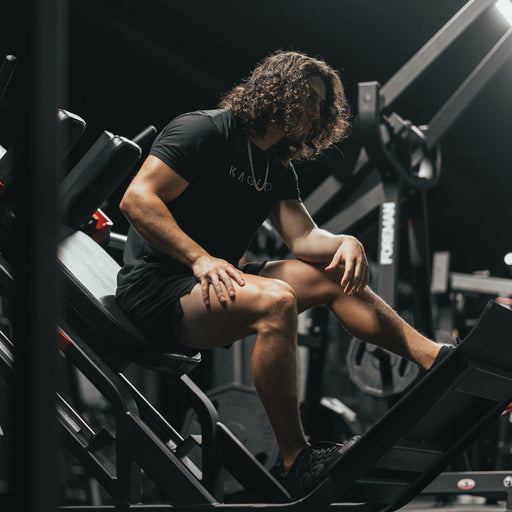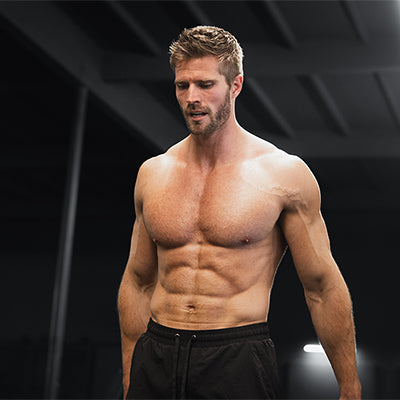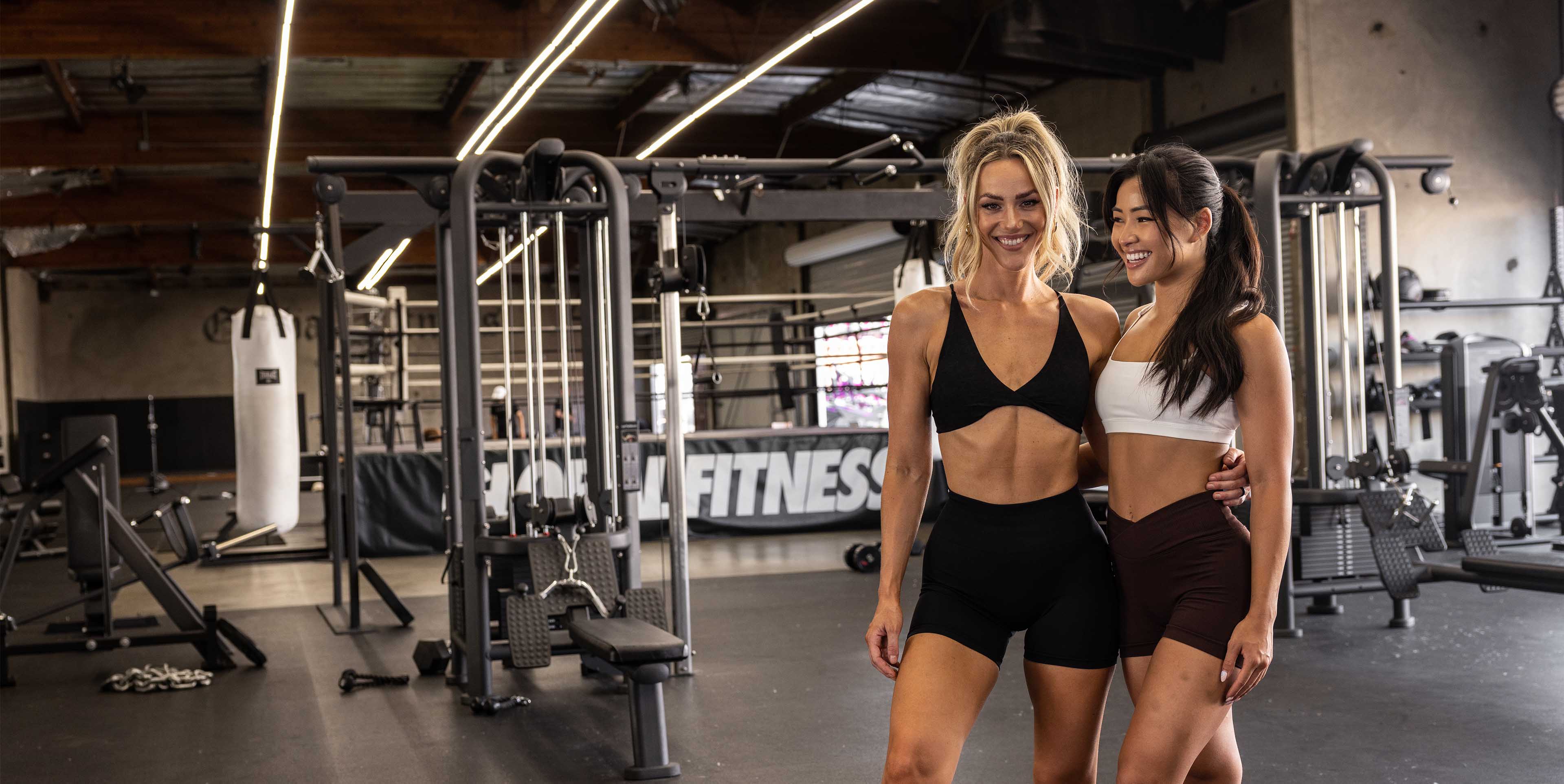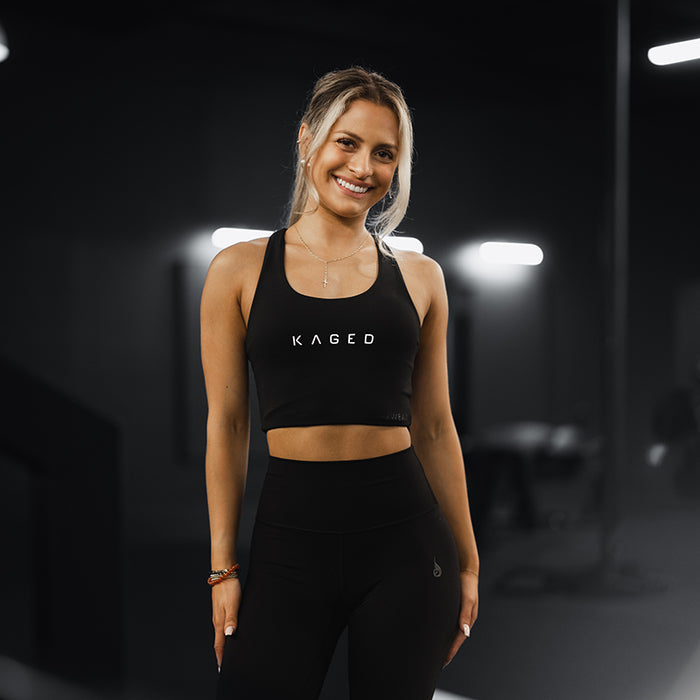Break through plateaus in your hamstrings development
HAMSTRUNG
The purpose of this 12-week series is to target your hamstrings, bringing them up if they’re a weakness in your physique. Sometimes this is a genetic/structural issue, and the best way to address it is by increasing mass and definition in these muscles at the backs of your legs. This physique problem can come about for a few different reasons:
* Your legs are weaker overall, and you don’t train them with as much intensity as you do upper body muscles.
* Your legs are weaker overall, and you tend to emphasize quads over hamstrings.
* Your quads are a strong body part, and they take over when you perform compound legs moves such as squats.
If you’re hamstrung about what to do with the muscles at the backs of your upper legs, my 12-week plateau-busting video series will help you overcome this weakness.
Each week, your hamstrings workouts will get more challenging, but I want you to put all your effort into each of these sessions. If you need to adjust your training volume, then do so with other body parts rather than with hamstrings—back off on calves and quads training, especially.
For this 12-week training series, you’ll follow your regular workout program, reorganizing it to prioritize development of your hamstrings. You’ll begin your training week with hamstrings, followed by a couple exercises for calves on that same day. Then you’ll train quads later in the week but at least 3 days before and after you train hamstrings. Even though hamstrings and quads are opposing muscle groups, training quads makes it more difficult to fully train hamstrings, especially when your body isn’t fully recovered.
Hamstrings are a fairly large muscle group with the primary purpose of flexing the knee joint, extending the hip when you begin to take a stride, and bringing the leg back to the center of your body. This makes hamstrings an essential component of walking and running. This is part of the reason that world-class sprinters often have massive hamstrings (and frequently injure them).
Here’s more about the specific muscles of your hamstrings work. This, along with the anatomy chart, will help you better address the specific weaknesses in this muscle group.
BICEPS FEMORIS
Your hamstrings connect to your “sit bones” and extend down to your knees. The biceps femoris is one of the most noticeable of the hamstrings muscles. It has two heads, and the long heads cross from your hip bones to the outer back part of your knees. Hamstrings moves such as leg curls increase definition and mass in both heads of the biceps femoris.
SEMITENDINOSUS and SEMIMEMBRANOSUS
The semitendinosus is visible as the middle of the hamstrings muscles, lying next to the biceps femoris. The semimembranosus is the third “finger” of the hamstrings, lying on the inside. These two hamstrings muscle also support knee flexion in tandem with the biceps femoris.
ADDUCTOR MAGNUS
This muscle lies on the inside of the other hamstrings muscles, at the backside of your groin. The adductor magnus is one of the biggest muscles in the human body, helping to create more thickness and definition in the backs of your legs. This muscle is involved in external and internal rotation of the legs, allowing you to twist your upper legs outward and bring them back to the center.
GLUTEUS MAXIMUS
While this is technically not a hamstrings muscle, you should be aware of the muscles in your butt when you’re training hamstrings. Often, these muscles can take over. You’ll need to decide if you want to use your gluteus muscles for some of these exercises or try to focus more on the hamstrings. This depends, of course, on whether gluteus maximus is a strength or weakness of your physique.
FUEL YOUR HAMSTRINGS GROWTH
In addition to beginning your week with hamstrings training, you should increase your calorie consumption by about 200-500 calories on and around the day when you train these leg muscles. Get in these extra calories in the 24-hour period that begins with the last meal of the day before, continuing through your morning and through your meal after your workout.
Here’s an example of what you should add to your Sunday night late-night meal and your consumption throughout your Monday hamstrings-training day.
Late-night meal
Add one scoop of Kasein® to the one you always take, and a piece of fruit such as plum, apple or peach. Or you can add an ounce or two of nuts such as almonds. This will add a total of about 200 calories.
Breakfast:
Eat one slice of whole-grain bread. That adds about 100 calories.
Lunch:
Get in about 2-3 ounces of brown rice. That adds about 100 calories.
Dinner
Go with a very large sweet potato rather than a medium one. That adds another 100 calories.
TRAINING SPLIT
Note that I’m “beginning” your training week with the weekend rather than ending with that. That’s because Mondays will be your “focus” day for your lagging bodypart. Since we’re targeting hamstrings for this 12-week training split, you not only want your hamstrings to be well rested, but you also don’t want to have trained your legs (quads or calves) for a few days before you work hamstrings with this level of intensity. Note that I’ve set up moderate cardio and abs on Saturday, and active rest on Sunday so that you’re well recovered to go full out with your hamstrings training on Monday.
| DAY
|
BODYPART
|
|
SATURDAY |
Moderate cardio/abs |
|
SUNDAY |
Active rest |
|
MONDAY |
HAMSTRINGS/calves *
|
|
TUESDAY |
Chest and triceps
|
|
WEDNESDAY |
Abs/cardio |
|
THURSDAY |
Quads/calves *
|
|
FRIDAY |
Back/biceps |
* Because you’re emphasizing hamstrings during this 12-week video series, you’ll ease off on other leg muscles. I’ve placed calves after hamstrings on Mondays, but you should only train them after hamstrings if you don’t feel fully spent. You can also train quads and calves together on Thursdays. Keep your quads training moderate, only perform about 3 moves for 4-5 sets on this day so you’re fully recovered for your hamstrings workout on the following Monday.
























